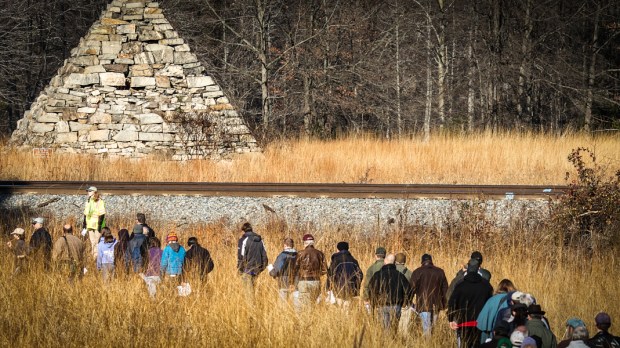I write this on 9/12, a day after the latest 9/11 anniversary. I wasn’t ready before then.
A month after 9/11, I flew into New York City to deliver a talk in White Plains later that weekend. The plane was on approach to LaGuardia when the pilot announced that passengers on the port side should look out and down. There they would see Ground Zero and the gaping holes left from the Twin Towers.
This prompted a starboard rush to the port side, so many passengers scrambling to catch a glimpse of the residue from the latest episode of mass carnage on American soil. I am including Pearl Harbor and almost any day of the Civil War.
I didn’t budge. I did not care to look. There were respectful oohs and ahs from the passengers looking down, but I had this peculiar thought: We have turned an unspeakable tragedy into a tourist attraction, a dark one at that. That’s a thing, by the way, Dark Tourism, visiting disaster sites. It is also called Grief Tourism or Thanatourism (from the Greek word for death), an attraction to places associated with death, an upgraded walk in the cemetery. It is even a topic of increasing research, at least since 9/11, though the term has been around since the mid-1990s.
Perhaps I am unkind to my fellow passengers, but it is what it felt like to me. That is what all those places feel like to me.
We visited the Fredericksburg battlefield on family vacation to Virginia one year. There in December 1862 the Union repeatedly sent exposed soldiers up Marye’s Heights against Confederates hunkered behind the shelter of a 4-ft stone wall. The Union troops were met by repeated rifle volleys and artillery fire. No Union soldier got closer to the wall than 40 yards. I was standing on ground where, over the space of the first two hours, 5,125 Union soldiers were wounded or killed. Most of the dead died in front of that stone wall along what came to be called the Sunken Road.
When, seven months later, Pickett’s shattered division retreated from the field at Gettysburg, they were accompanied by the taunting shouts of Union troops: “Fredericksburg! Fredericksburg! Fredericksburg!”
Fredericksburg was the first battlefield I had ever toured. One can walk that line, beginning to end and back, in a bit under an hour. It was a tight, cramped space funneling Union troops to death. The unwelcomed feelings it engendered unsettled me, an involuntary melancholia, even an ill-defined guilt over an event for which I had not the least responsibility. What do you say to these people, fallen in a bravely-fought battle? Thanks for your service?
How might their lives have gone? What contributions, beyond their deaths, might they have made? What did their death cost the living? I could not even intellectualize it. Hardly anyone else could either. Even the eye-witness battlefield descriptions from the men who survived seem dismally clichéd: “slaughter,” “butchery,” “massacre,” “bloodbath.” We run out of words.
I visited the Vietnam War Memorial. The feeling there is different, even as I searched and found David’s name, one of my college roommates. This was different somehow. I wasn’t at a “place.” There was no fight at this Wall, so I had no confrontation with my mind’s eye, trying to comprehend the struggles of desperate, dying men while I walked along the wall at the Sunken Road. That may be the difference.
But flying over where the Twin Towers had stood, with bodies or parts of bodies flung here, buried there, that were yet being uncovered, no, I did not want to look.
On a family trip to New York in 2007, our youngest was 10. She was perhaps all of five when the Towers were attacked. She was anxious to see the spot where they had stood. Nobody else was especially keen on making it a destination. Happenstance brought us to within a block from the site, so we stopped. Until then I was unaware of how the Twin Towers had so deeply penetrated the consciousness of even the quite young, how it had in some way marked them.
The Twin Towers site is now a memorial, a destination forever burned into our national story, a stopping place again for tourists who visit and gaze and, ultimately, incorporate the sights and sites of catastrophe into our national life. We draw lessons from it (sometimes the wrong ones) and it shapes who we are, what we believe about ourselves, and influences the way we see the world. Death, in all its forms, does that.
These things finally expose us to the sheer naked frailty of human life. They assault us, our senses and our persons. And however much we shape death as victorious defiance, with the soldier rushing forward, or as of the innocent whose innocence summons uninterrupted memorialization, these are nothing so much as part of the dark tour each of us will be compelled to take.
“No sparrow falls without His notice,” quotes a priest in a novel I read once. “But,” in a troubling reply, “the sparrow still falls.”

